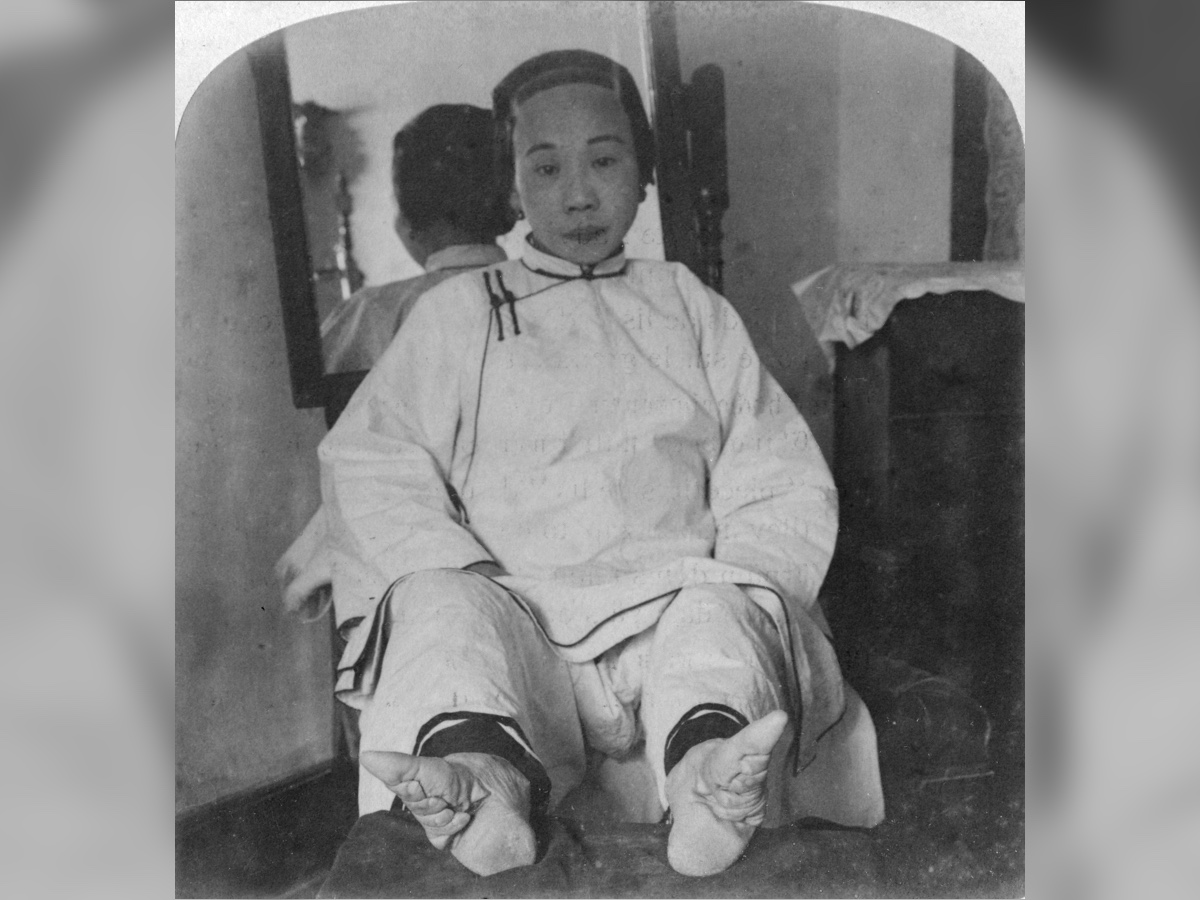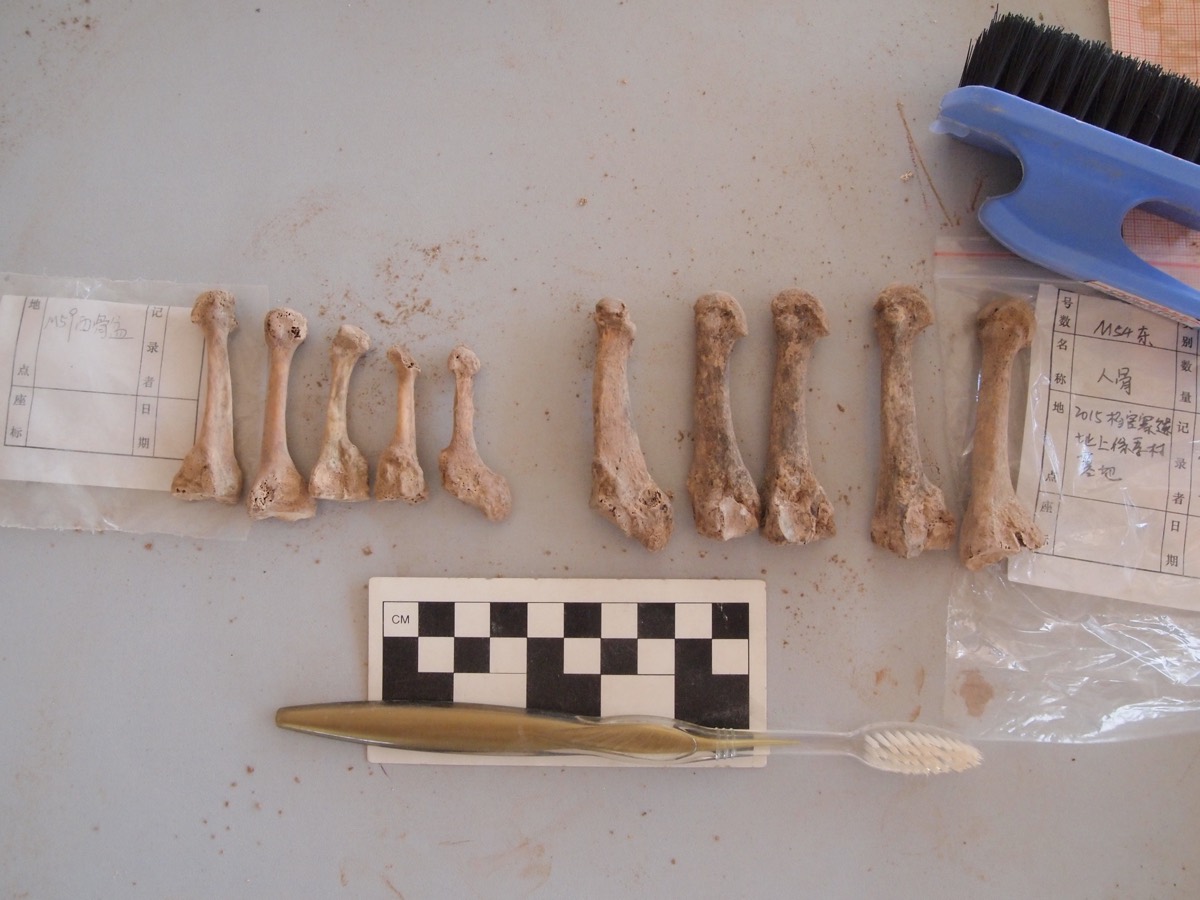Ming Dynasty Skeletons Reveal Secrets of Foot-Binding

Foot-binding was practiced for about 1,000 years in China. The memory of this practice is preserved in historical documents, shoes found in graves of the elite and the testimonies of a dwindling number of women with bound feet who survive today.
But only in recent years have archaeologists looked at skeletons with bound feet to learn more about the women who experienced this extreme form of body modification.
Elizabeth Berger, a postdoctoral fellow in Chinese studies at the University of Michigan, had been working on an archaeological excavation at the site of Yangguanzhai near Xi'an in China's Shaanxi Province. The archaeological team, led by Liping Yang of the Shaanxi Archaeological Academy, was primarily interested in a Neolithic village buried there; they unexpectedly found an overlaying cemetery from a much later era, the Ming Dynasty (1368-1644), and they salvaged the graves. [Gallery: Ancient Chinese Warriors Protect Secret Tomb]
"I was looking at the bones and I noticed that there was something very strange about the feet," Berger told Live Science. "My first thought was that it might be foot-binding, and I started to look into it and found that at that point there hadn't been many publications on what the bones of foot-bound feet actually look like, although there was a lot of research on the history of it."
In an article in the March 2019 issue of the International Journal of Paleopathology, Berger and her colleagues reported that four of the eight elite women had signs of bound feet.
Researchers think that the earliest forms of foot-binding had started by the Southern Song Dynasty (1127–1279). At first, the practice was aimed at making the feet narrower, a process that didn't alter the bones too severely. The more extreme binding of the foot into a much shorter-arched form started during the Ming Dynasty. The practice started among elite women and later spread to other classes.
Binding typically started at a young age; the tight bandages that folded the foot into its "lotus" shape had to be worn throughout a woman's life. A northern style and southern style of foot-binding existed by the 1600s. While the toes remained straight in the southern style, in the northern style, all the toes except the big toe were curled under the sole, making the foot even less stable. Women with bound feet faced health consequences throughout their lives, including infections, lost toes, lost mobility, pain during walking and a higher rate of fractures from falls in old age, research has found.
Sign up for the Live Science daily newsletter now
Get the world’s most fascinating discoveries delivered straight to your inbox.
Historians and economists are still publishing papers investigating the factors that influenced foot-binding, as the motivations behind the practice seem to be complex and not simply about enforcing beauty standards. One recent study in the journal PLOS ONE showed that foot-binding, in the early 20th century at least, was linked to high productivity among girls and women in craft industries like weaving and embroidering textiles, which contradicts a conventional assumption that the practice was a fetishistic custom that continued despite the economic burden it placed on families.
"Definitely, there's a lot more research that needs to be done about exactly how the practice changed over time in different places in China," Berger said. "I see a lot of descriptions in Western literature that describe it as one thing, as a monolithic practice, whereas in fact it was practiced for 1,000 years and it changed from one place to another."
Patterns arise in foot-binding
The sample from the excavations at Yangguanzhai was small, but Berger thinks that the pattern observed may reflect foot-binding as an evolving practice.

The researchers noticed that the women's metatarsals, which are the long bones in the arch of the foot, and the few surviving toe bones had been dramatically altered. However, compared with the few known later cases of foot-bound skeletons, the ones found at Yangguanzhai had tarsal bones around the heel that were not as clearly altered, though they were slightly reduced in size, Berger said. "That suggests there might have been an increase in how extreme the binding was over time during the Qing Dynasty," she said.
Christine Lee, an anthropologist at California State University, Los Angeles, has also been studying archaeological evidence of foot-binding found in graves at the Xuecun archaeological site in China's Henan Province that date to the Ming and Qing dynasties.
Lee explained that there is normally an aversion to digging up graves that are less than 1,000 years old in China. "They're worried about accidentally disturbing their ancestors, which would cause bad luck today," Lee said. Excavations on cemeteries from the last millennium, when foot-binding was practiced, are rare unless the tombs are under threat of being destroyed. The Xuecun site had to be dug up during recent rescue excavations as part of the world's largest water-diversion project, which is channeling water from the Yangtze River to Beijing.
Lee was also working with a small sample, but she noticed a general pattern: The rate of foot-binding among women seemed to increase from the Ming Dynasty to the Qing Dynasty (1644-1911), which fits with historical knowledge about the practice.
Foot-binding became more widespread, especially among elite women, during the Qing Dynasty. During this era, Manchurian rulers in charge suppressed the culture of the Han Chinese ethnic group. One part of Han identity that couldn't be policed was foot-binding, as it was practiced among women in domestic spaces, Lee said, adding that the tradition could also have provided a way for women to escape their socioeconomic class. But there's little historic record of how women personally experienced foot-binding.
"You don't get any writings by women with foot-binding until the early 1900s, when they're calling for the abolishment of it," Lee said. "So, what happened for those thousand years [before]?"
If bioarchaeologists (those who specialize in skeletal remains at archaeological sites) can't fully reconstruct how women felt about foot-binding, the researchers might at least be able to gain some insights into the physical experience. Berger and her colleagues wrote in their paper that most accounts of foot-binding before the 19th century didn't include explicit or technical explanations of the practice but simply described the feet as "slender," "pointed," "bowed" or shaped like lotuses.
"One of the things bioarchaeology can do is it can tell us about people's experiences that were never written down," Berger said, "and we can see that now."
- 25 Cultures That Practiced Human Sacrifice
- 7 Bizarre Ancient Cultures That History Forgot
- In Photos: China's Terracotta Warriors Inspired by Greek Art
Originally published on Live Science.











